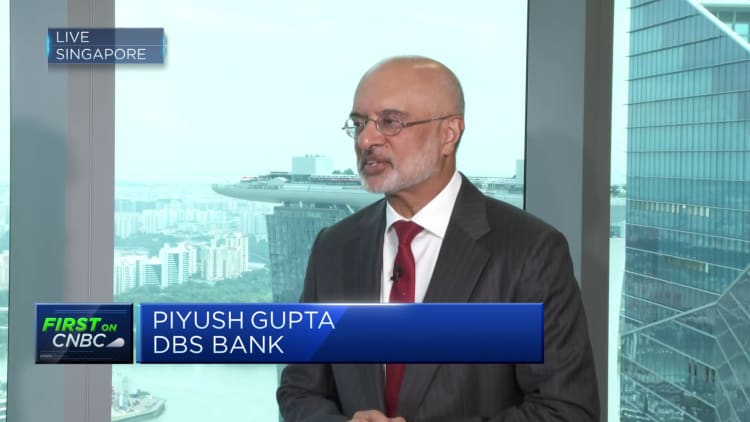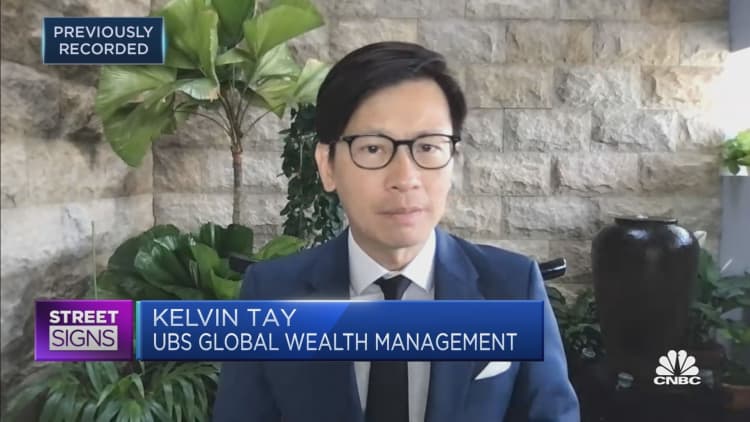Singapore’s digital banks dangle incentives to win new customers — is it sustainable?
Singapore’s new digital retail banks are offering lower fees, more incentives and waiving minimum account balances to win over customers from traditional banks. But how viable is this in the long run?
Bloomberg | Bloomberg | Getty Images
Mục lục bài viết
Singapore’s new digital banks
The city-state gave out four digital bank licenses in December 2020.
Two digital full bank licenses went to Grab-Singtel’s GXS Bank and Sea Group’s MariBank which serve retail customers. The other two digital wholesale bank licenses were bagged by Ant Group’s ANEXT Bank and Green Link Digital Bank, catering to small-and-medium enterprises and other non-retail segments.
GXS Bank currently offers its service to customers and employees by invite only, while MariBank is only available to employees of Sea Group.
Trust Bank, on the other hand, did not have to jump through the hoops to apply for a separate digital full bank license as it’s backed by banking giant Standard Chartered, which secured an additional full bank license to establish a subsidiary to operate a digital bank.
A partnership between Standard Chartered and Singapore’s largest supermarket chain FairPrice Group, Trust Bank appears to be making some headway since its Sept. 1 launch.
It is useful for a short-term customer acquisition story but it will be a big challenge to keep these customers coming back.
Zennon Kapron
director, Kapronasia
Trust Bank claims to have reached more than 450,000 customers and achieved 9% of banking market share in Singapore within five months, based on data shared with CNBC.
New credit card customers receive vouchers worth 25 Singapore dollars ($18.80) to spend at FairPrice supermarkets, and can continue to accumulate reward points when they purchase groceries there. During their first month of launch, Trust gave out almost 60 tons of rice and over 11,000 breakfast sets – each worth more than S$2, according to the bank.
The bank wouldn’t divulge its customer retention rate nor profit margin to CNBC.
“While it is common in the market today to offer high-ticket and big rewards which are either complex to understand or have a poor experience, Trust offers simple, easy to understand rewards which are always tangible, which help bring down the cost of living and importantly, are in real time,” Dwaipayan Sadhu, CEO of Trust Bank, told CNBC over email.
“It is useful for a short-term customer acquisition story but it will be a big challenge to keep these customers coming back,” Kapron from Kapronasia said.
Trust Bank does not charge any annual fees or fees for foreign transaction, cash advance nor card replacement to credit card customers. It also does not require a minimum balance for its savings account, unlike traditional banks.
Its rival GXS Bank also does not require minimum balances for holders of savings accounts, currently the only product the bank is offering. GXS is a consortium between ride-hailing and food delivery giant Grab and Singapore’s largest telco provider Singtel.
The company says it targets the “underserved segment” — which includes the gig economy workers, self-employed entrepreneurs and those new to the workforce.
The bank has removed certain fees, such as fall-below fees that are usually charged when the balance drops below the minimum daily average.
The bank has “a low cost of acquisition and low cost to serve,” its CEO Charles Wong told CNBC.
“As a digital bank, we are unencumbered by the cost of maintaining a physical network such as branches or physical ATMs, resulting in cost savings on our overheads,” Wong explained.

watch now
In addition, Grab and Singtel have a combined customer base of over 3 million and the bank is “leveraging on [the] two giants for retail customers.”
“We also don’t provide gifts for customers. When you sign up, you sign up because it’s relevant to you or you are a Grab or Singtel customer and it is going to make it easy for you to make payments,” said Wong.
“Yes, you get additional rewards as you spend which makes sense because you’re spending within the ecosystem.”
GXS Bank, however, expects its bottom line to be largely driven by interest income, said Wong.
I think it’s going to be difficult for these banks to really have an impact, especially in the retail [banking] space on the Singapore market.
Zennon Kapron
director, Kapronasia
A 2022 analysis by Simon-Kucher revealed that 25 of the largest neobanks, also commonly known as digital banks, found out that only two of them — less than 10% — have achieved profitability. It also showed a majority earning less than $30 in annual revenues per customer.
Kapron said that traditional banks offering credit card products give out welcome gifts, like travel luggage or Apple watches, because they expect to be profitable after a certain period.
Those banks have already worked out how much they have to spend to gain a customer, and expect to recoup the costs when the customer starts missing payments or incurring interest, he explained.
Tough competition
Observers have previously raised questions about the need for digital banks in a largely banked population, where only 2% do not have bank accounts.
There’s also strong competition among the more established traditional banks.
I think the digital banks would have a higher rate of success if we were in a severely underbanked place like the Philippines.
James Tan
Quest Ventures
“If you look at DBS Bank, it’s not like their digital offerings are [lousy],” said James Tan, managing partner of Quest Ventures, a VC company headquartered in Singapore.
Tan said he signed up for Trust Bank to see how different it will be to traditional banks. “I found no difference,” he told CNBC, adding that he eventually closed his Trust Bank account.
“I think the digital banks would have a higher rate of success if we were in a severely underbanked place like the Philippines,” said Tan.

watch now
Kapron added that it is going to be difficult for these banks to have an impact, especially in the retail banking space in the Singapore market.
“The market is just over-banked and the differentiator of these new digital banks doesn’t really move the needle much in terms of what they are offering.”
“Until that happens, you are having bags of rice, high promotional discounts or rewards, which are useful for acquiring customers but then, how do you keep them coming back?” asked Kapron.











